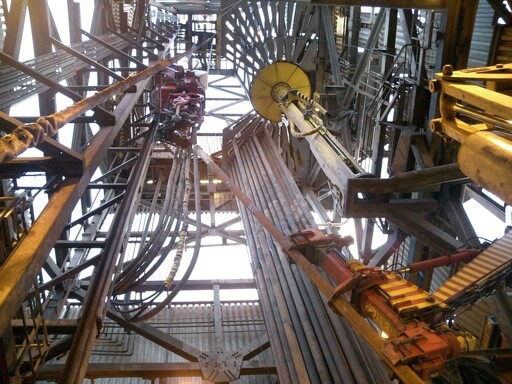
Last week, the Supreme Court threw U.S. and international climate policy into turmoil by freezing President Obama’s Clean Power Plan while it is being challenged before the U.S. Court of Appeals for the D.C. Circuit. But matters took a turn over the weekend with the death of Justice Antonin Scalia, whose absence from the high court could mean that the plan will ultimately survive.
“If Scalia’s seat remains vacant when the Clean Power Plan reaches the high court, a 4-4 vote would result in an automatic affirmance of the D.C. Circuit’s decision on the rule,” says Jack Lienke, an attorney with the Institute for Policy Integrity at the New York University School of Law, by email. “We can’t know what the D.C. Circuit will decide, but supporters of the Clean Power Plan are optimistic — both because the D.C. Circuit panel, unlike the Supreme Court, denied motions to stay the rule and because the three-judge panel includes two Democratic appointees.”
So last week the Clean Power Plan seemed to be severely threatened – but now, not as much.
Despite this roller-coaster, though, one thing has not changed — the power sector in the U.S. is transforming in a way that will make the generation of electricity much less carbon-intensive in the future, the precise thing that the plan aims to achieve anyway. This is not a legal development, and not really a political one either. It is, in substantial part, a business decision.
Two recent sets of new data underscore this reality. The first, recently highlighted by the American Wind Energy Association, involves where the U.S. is adding new electricity generating capacity. In 2015, AWEA’s and other recent data suggest, wind led the way with 8.6 gigawatts (or billion watts) of new added capacity. Solar photovoltaics added 7.3 gigawatts (much of that on individual rooftops) and, in third place, came natural gas with 6 gigawatts.
The wind industry says another 9.4 gigawatts, meanwhile, are currently under construction, and 4.9 gigawatts on top of that are “in advanced stages of development.” Thus, the two biggest growth sectors for U.S. power are both renewable. Coal, by contrast, saw 14 gigawatts of plant retirements in 2015.
Similarly, the U.S. Energy Information Industry expects renewable energy to grow 9 percent in the U.S. in 2016, and to make up two thirds of added capacity (not unlike in 2015).
And this is just one of many, many indicators of a change underway in the U.S. power sector. Consider another: What leaders of the U.S. utility industry themselves think about the future.
The website Utility Dive has just published a survey of over 500 utility industry executives, from companies large and small, conducted in late 2015 and early 2016. 61 percent of respondents came from investor owned utilities, followed by 15 percent municipal utilities, 14 percent from electric cooperatives, and 10 percent public power companies. The companies were of all sizes, but 23 percent of those surveyed had customer bases of over 4 million people.
And the headline finding? “Nearly every” respondent felt that it was time for his or her company’s business model to change. And no wonder — the power industry is being upended by an insurgency of Nest thermostats, rooftop solar installations, customers who want home batteries and car chargers and much more.
Power companies are struggling to keep up with all of this — and the result of many, if not most, of these changes is that the utility industry is likely going to be less carbon intensive in the future, in part because you and I are going to both waste less energy and also get more out of the energy that we do use.
In particular, the survey shows, utility companies are wary of falling behind in a distributed energy world in which customers need them less because they can generate (with solar) and perhaps store (with batteries) much or even all of their own power. So companies want to become providers of these kinds of services, and so retain these customers.
Sure enough, when it comes to finding new sources of income and new businesses, “the most popular emerging revenue opportunities among respondents are energy management and efficiency services, community solar, and electric vehicle charging infrastructure, while green pricing programs and rooftop solar offerings were also popular,” the Utility Dive survey finds.
Oh, and then there’s how power will be generated at these sometimes massive companies in the future. The Utility Dive survey finds (and again, this is worth quoting in full):
Respondents believe utility-scale renewables, distributed generation and natural gas will increase in their utility’s power mix, while coal and oil will decline and nuclear will remain stagnant. Utilities expect stronger growth for large-scale solar and distributed generation than they do for wind or gas.
The number one thing that utility executives said their company should invest in more was energy storage, at 65 percent, followed by distributed generation, at 52 percent. Energy storage, at the grid scale, is a key technology that will allow for, among other things, more integration of renewable resources onto the grid.
In another notable statistic, meanwhile, when asked in what areas their companies’ power mixes would “significantly decrease” in the coming 20 years, 54 percent said coal, far more than for any other electricity source. No wonder that 41 percent of executive surveyed wanted the Clean Power Plan maintained as it is, while 29 percent thought it should be strengthened. It’s hard from such numbers to argue that the plan is strongly opposed by power companies.
It’s important to emphasize that these results are coming from leaders of an industry that is hardly known for risk-taking. Utilities have been, traditionally, heavily regulated incumbents who are slow to change.
But they’re also headed by leaders who can sense what’s happening out there and who would be foolish to ignore it. Which is why no matter what happens with the Clean Power Plan, all signs suggest our country will be using less coal — and a lot more wind and solar — in the future

Scroll to top

 Fundamental factors to strengthen Pemex12 August, 2019
Fundamental factors to strengthen Pemex12 August, 2019 Offshore Project Development: The Road to First Oil26 July, 2019
Offshore Project Development: The Road to First Oil26 July, 2019
